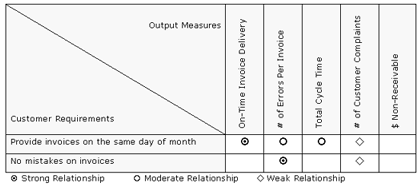Collecting Data
For most organisations, collecting data is not an easy task. Proper planning is necessary to ensure a smooth data collection process and reduce the number of iterations. In the development of a good plan also forces one to thinking ahead of what we need the data for and shape the direction of future analysis.
Planning Guide
1. Define data collection goals
- What are you trying to establish and how will it help you?
- What are you trying to prove or disprove?
2. Develop operational definitions and procedures
- What is the definition of the measurement?
- How will you collect this data?
3. Identify sources for the data
- Where will you get the data from?
- Can you use historical data or do you need new data?
4. Prepare a plan
- Do you need all the data?
- How will the data be collected?
5. Implement and Refine
- Start collection.
- Make sure the data all means the same thing.
- Change definitions if appropriate.
Data Collection Plan
A good data collection plan should have the following elements:
- What to measure - What data do you need to answer the question? Stratification factors should be included.
- Measurement Type - Outcome or Variables, Continuous or Discrete.
- Operational Definition - Precise description the value can be derived.
- Data Source - Where is the data? (E.g. Systems, case files)
- Collection Method - Who and how will the data be collected?
- When - Time span for historical data or at the point of activity?
- Measurement System - How do you control measurement errors?
- Display - How will the data be displayed?
Measures to Collect
There are three types of measures that you need to collect data on, namely the input, process and output measures.
1. Output Measures
These are measures that enable you analyse how well you perform in meeting the requirements of customers. These are important measures as they determine if improvement is required. However, it is the input and process measures that help you improve the process.
2. Process Measures
Process Measures are taken at critical points in the process such as defects, step-wise cycle time, etc.
3. Input Measures
These are measures that enable you analyse the performance of the supplier and its impact to the process. These are often overlooked and yet provide an excellent insight into problems that may be experienced downstream if the input is permitted to enter in its current form.
Selecting Key Measures
We can use a decision matrix to explore the relationship between customer requirements and output measures in order to identify the key output measures to track. As shown in the following example, customer requirements are mapped against potential output measures. The strength of the relationship between the two is rated by the stakeholders of the process.

Collecting Data
It’s not enough just to plan carefully before actually collecting data and then assume that everything will go smoothly. It is also important to make sure the data continues to be consistent and stable as it is collected. Some things to take note:
- Communicate the what and why to the data collectors.
- Train everyone who will be collecting data.
- Make data collection procedures error-proof.
- Be there in the beginning to oversee data collection.
- Confirm understanding of operational definitions.